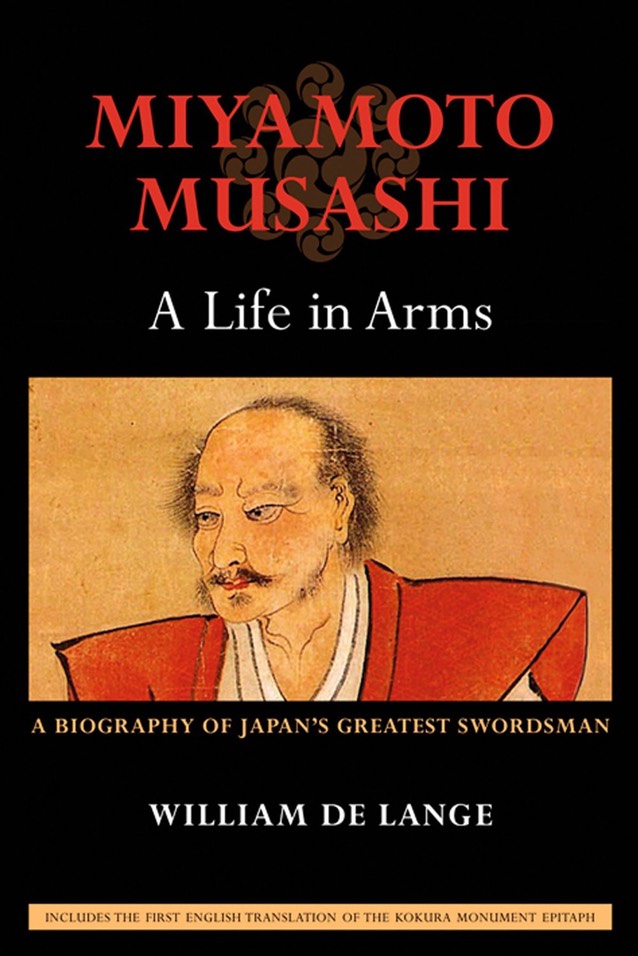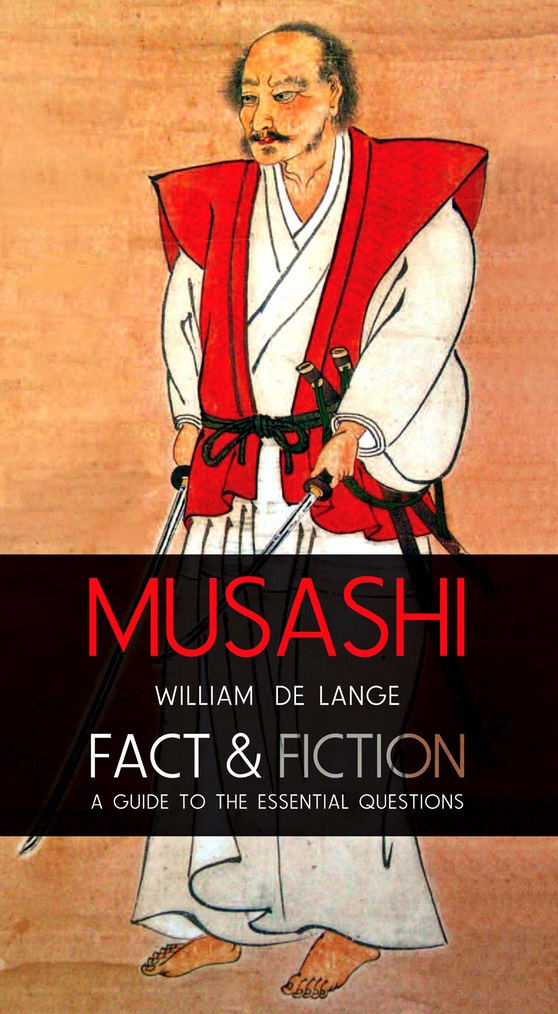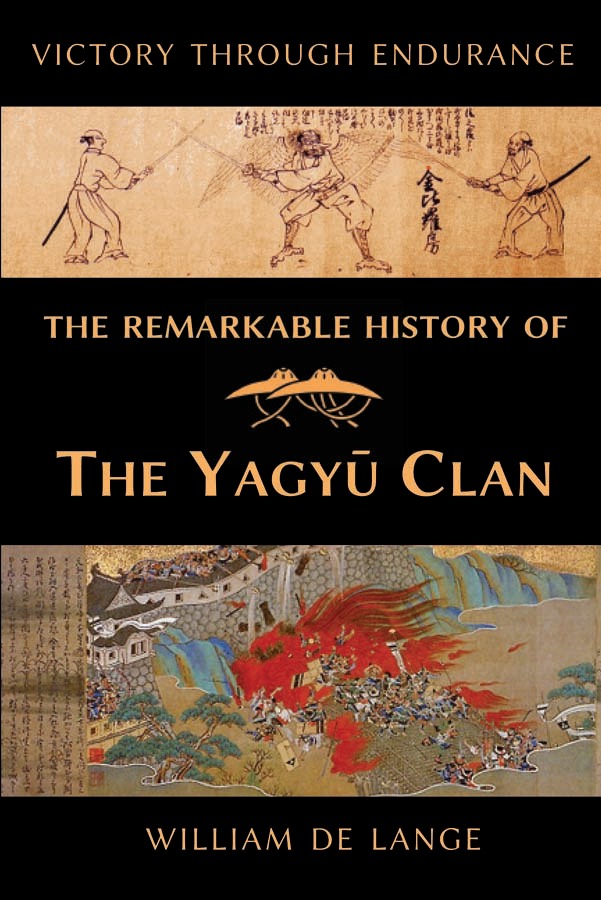Miyamoto Musashi: A Life in Arms

First to translate two of the oldest accounts of Musashi's career, the Bushū denraiki and the Bukōden, the author here presents a full biography of this most famous yet most enigmatic of swordsmen, Miyamoto Musashi.
Drawing on a wealth of additional and often neglected original sources, the author reveals how events deeply buried in Musashi's past set him on the hard path to prove himself a "swordsman without equal"—a path that began with the brutal slaying of Arima Kihei, led to the fall of the illustrious Yoshioka clan, and culminated in his dramatic encounter with Sasaki Kojirō on Ganryū island.
A Life in Arms traces Musashi's constant search for his own distinct style of swordsmanship; how he built on what he learned from his father and his uncles, how he perfected it on his musha shugyo, and how his Enmei-ryu evolved into the Niten Ichi-ryu, his unique art of fighting with two swords. Finally, it traces the remarkable gestation of The Book of Five Rings, his great legacy to posterity of a unique martial philosophy.
In the course of this highly readable account many of the convenient myths that have arisen around Musashi are debunked, while the more controversial aspects of the warrior's life that have been left hidden, perhaps deliberately, are uncovered: his deeply troubled relationship with his father, his whereabouts during the battle of Sekigahara, his role in the siege of Osaka castle, and the birth and death of an illegitimate child, an event that deeply influenced his art.
A Life in Arms shows how Musashi's path through life was shaped by strong personal traits: his reckless valor in the face of danger, his sensitive intelligence in the fields of art and architecture, his generosity toward peers and pupils, and his defiant stubbornness in old age. The complex yet human portrait that arises is a far cry from the accepted one-dimensional caricature of this medieval swordsman.
216 pp, 6 x 9, Softcover
11 Maps and charts
Lists of historical periods, castles, temples, shrines, battles, and rebellions, Glossary, lineages, bibliography, index
Japanese history / Swordsmanship / Martial arts
Published by FLoating World Editions / ISBN: 978-1891640629
Victory Through Endurance: The Remarkable History of the Yagyū Clan
It is perhaps no coincidence that the two Chinese characters that make up the name of Yagyū stand for the willow tree and life, or the giving of birth, for both seem to sum up perfectly the particular characteristics that helped propel this ancient clan to such exalted heights.
This is the true story of the eventful history of the famous Yagyū clan—a story that began during early heady days of the Genkō Rebellion (1331–33), when emperor Go-Daigo sought to restore power to the throne with the support of the Yagyū and other loyal clans. It follows their campaigns on behalf of Go-Daigo's southern court during the Northern and Southern Courts period (1334–1392), and their long and hard struggle to retain their autonomy when the country rapidly descended into anarchy in the wake of the Ōnin Rebellion (1467–77).
It recounts how, through a succession of misfortunes beyond their control, the Yagyū clan first lost its independence, then its castle and domains, until finally its members were thrown upon the mercy of a local temple. Yet it was in the very depth of those bleak and desperate years, that its leader, Yagyū Muneyoshi, discovered his true strength and began his clan's remarkable recover—a recovery crowned with the ascendancy of his son, Munenori, to the exalted rank of daimyō.
Like the pliable willow tree, it was their resilience in the face of irresistible forces that enabled the Yagyū to outweather the raging storms of fortune and remain standing, alive and well, their spirit intact. In doing so, the Yagyū gave birth to an art of fencing that has survived for more than a half a millennium. Among the countless schools of swordsmanship brought forth by Japan's feudal era the Yagyū Shinkage-ryū still stands out for its sheer continuity.
360 pp, 6 x 9, Softcover
11 Maps and charts
Lists of historical periods, castles, temples, shrines, battles, and rebellions, Glossary, lineages, bibliography, index
Japanese history / Swordsmanship / Martial arts
Published by TOYO Press / ISBN: 978-949-2722-171

In the long and complicated—indeed, often hotly contended—narrative of Miyamoto Musashi's life there are a number of important questions that remain tantalizingly elusive: What was his appearance? Where was he born? Who was his father? Who was his mother? Who were his children? Who were his benefactors? In what battles did he participate? With whom did he duel? What did he write? What are his paintings? Where did he stay? And where is his grave?
Up till recently, there were not many original sources to which the English reader could turn to answer these questions about Musashi’s life. Indeed, even in his Book of Five Rings Musashi hardly touches on any of these questions, limiting the outlines of his life to no more than a few paragraphs before launching into his exposition on his school of swordsmanship. With the translations of the complete range of classic Japanese sources on The Real Musashi, the English reader now has at his disposal a wholly new range of sources that nevertheless present a highly complex, at times even bewildering, array of alternative perspectives and narratives.
This fully illustrated guide brings order in that chaos by carefully reconstructing the narrative of Musashi’s life. Through a clearly defined number of themes it finally address those hitherto unanswered questions on the basis of the original Japanese sources. Unless they are waylaid by firm historical fact, it gives as much credence as possible to these early accounts, not only because they are the only true sources we have, but to do justice to the great efforts of those early historians, many of whom dedicated the better part of their lives in a serious quest to uncover all they could about the man they, like so many after them, had come to admire.
182 pp, 4 x 7, Softcover
141 illustrations
Bibliography, index
Japanese history / Swordsmanship / Martial arts
Published by TOYO Press / ISBN: 978-949-2722-355
